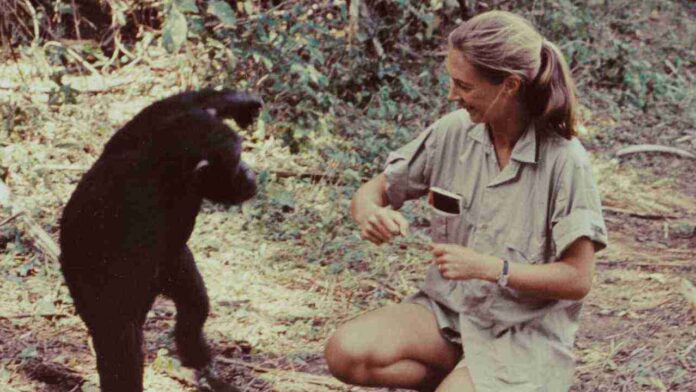Jane Goodall, a well-known scientist, died at the age of 91. She was widely recognized for her study in the field of chimpanzees and evolution. Her work contributed greatly to understanding many aspects of evolution. Her research is truly acknowledged and admirable, as many of her studies and published works have helped different scientists study more about evolution and chimpanzees.
In the 1960s, her studies became very popular. She used to visit different chimpanzees and carefully observed their behavior, despite struggling with mosquitoes, difficult conditions, and the dangers of the wild. For her work, she became known as one of the most respected scientists who researched the behavior of chimpanzees. Many scientists appreciated her efforts. She also published multiple books, some of which became very popular, such as My Friends, the Wild Chimpanzees (1967), In the Shadow of Man (1971), and Through a Window (1990).
Her death, while on a speaking tour, was confirmed by the Jane Goodall Institute, whose U.S. headquarters are in Washington, D.C. Her research will always remain alive and will continue to help other scientists understand chimpanzee behavior.
She was the first scientist to explain to the world that chimpanzee mothers are capable of giving birth only once every four and a half to six years, and that only one or two babies were produced each year by the Gombe Stream troop. She discovered that first-time mothers generally hid their babies from adult males, prompting frantic displays by the males—leaping and hooting that could last for five minutes. However, she also observed that experienced mothers freely allowed males and other females to view their infants, which satisfied their curiosity in a much calmer introduction.
In the 1970s, a time came when the situation changed, and she could not give as much time to her research on chimpanzees. Instead, she dedicated herself to fighting against those who were destroying chimpanzee habitats and causing dependency. At that time, many people were also conducting medical research on chimpanzees, and to protect them, she stood firmly and worked tirelessly. Spending time on detailed behavioral studies became difficult, as she was deeply involved in the protection of chimpanzee life.
She was also the one who proved that human beings are not the only species on Earth capable of using tools in daily life. Chimpanzees, too, are among the animals that use tools. In terms of evolution, chimpanzees and monkeys are the closest relatives to human beings, so studying them helps in understanding evolution and finding new clues about the treatment of different kinds of diseases.







